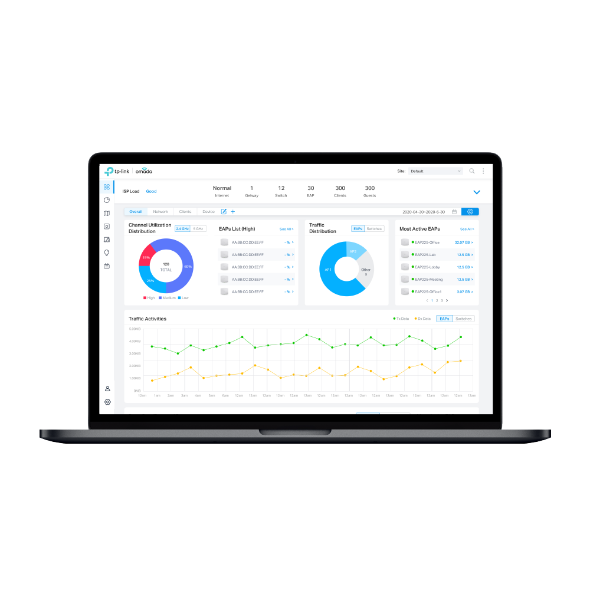How to configure Omada Controller self-start as a Windows service
Omada Software Controller
Recent updates may have expanded access to feature(s) discussed in this FAQ. Visit your product's support page, select the correct hardware version for your device, and check either the Datasheet or the firmware section for the latest improvements added to your product. Please note that product availability varies by region, and certain models may not be available in your region.
This article applies to: Omada Software Controller of Windows
Contents
This article introduces how to configure Omada Controller as a windows service and how to configure self-start with this function.
- A computer with the Omada Controller installed already.
- A computer with the operation system of Windows. Windows recommend version: Windows10 x64/Windows11 x64/Windows Server 2016 x64/Windows Server 2019 x64/Windows Server 2022 x64.
- Controller Version Required: Omada Controller above 4.1.5, Omada Pro Controller above 1.0.
- Download the NSSM – the Non-Sucking Service Manager (https://nssm.cc/download). We recommend to use the latest release. Use the file(nssm.exe) in the folder of win64.
This document introduces how to configure Omada Controller as a Windows Service by using NSSM. At the same time, you can launch automatically when you turn on your PC for Omada Controller by way of Windows Service.
You can follow these steps to configure the Windows service of Omada Controller.
Step 1. Extract nssm.exe to a convenient location, here I use “C:\NSSM” as an example.

Step 2. Make sure you have run Omada Controller before, or you can just keep Omada Controller running during this operation.
Step 3. Run Windows Command Line as administrator and cd to the path you placed nssm.exe. Here is the “C:\NSSM”.


Step 4. Type nssm install “Omada Controller” to create a new Service using nssm.

Step 5. Configure Application in NSSM. Set the following parameters as listed below:
Application
Path:
C:\Users\tplink\Omada Controller\bin\start.bat
Startup directory:
C:\Users\tplink\Omada Controller\bin\
Note: Here we install Omada controller at C:\Users\tplink\Omada Controller. You should use the installed path of controller.

Step 6. Configure Details in NSSM. Set the following parameters as listed below:
Details
Display name:
Omada Controller Service
Description:
Add one if you want
Startup type:
Automatic

Step 7. Configure Log on in NSSM. Set the following parameters as listed below:
Log on
Local System account and select Allow service to interact with desktop

Step 8. Click Install service and will show you the successful note.

After the Omada Controller service is successfully set up, please restart your computer and the Omada Controller service will startup automatically. Please check on Windows Task Manager to see if the java.exe and mongod.exe are running properly and the service of omada Controller is running. Then you can type http://127.0.0.1:8088 or https://127.0.0.1:8043 in web browser to login to the Omada Controller’s Web management page.


The above is the configuration for Omada Controller as a Windows service.
Get to know more details of each function and configuration please go to Download Center to download the manual of your product.
How to change the settings of the Windows service of Omada Controller
Re. If you want to modify the above configuration, you can run Windows Command Line as administrator and cd to the path you placed nssm.exe (Refer to step 3). Type in the following commands to manage the service.
- nssm edit “Omada Controller”
- nssm start “Omada Controller”
- nssm stop “Omada Controller”
- nssm restart “Omada Controller”
- nssm status “Omada Controller”
- nssm remove “Omada Controller”
Related FAQs
Looking for More
Is this faq useful?
Your feedback helps improve this site.
What’s your concern with this article?
- Dissatisfied with product
- Too Complicated
- Confusing Title
- Does not apply to me
- Too Vague
- Other
Thank you
We appreciate your feedback.
Click here to contact TP-Link technical support.
Recommend Products
TP-Link Community
Still need help? Search for answers, ask questions, and get help from TP-Link experts and other users around the world.
This website uses cookies to improve website navigation, analyze online activities and have the best possible user experience on our website. You can object to the use of cookies at any time. You can find more information in our privacy policy . Don’t show again
This website uses cookies to improve website navigation, analyze online activities and have the best possible user experience on our website. You can object to the use of cookies at any time. You can find more information in our privacy policy . Don’t show again
Basic Cookies
These cookies are necessary for the website to function and cannot be deactivated in your systems.
TP-Link
SESSION, JSESSIONID, accepted_local_switcher, tp_privacy_base, tp_privacy_marketing, tp_smb-select-product_scence, tp_smb-select-product_scenceSimple, tp_smb-select-product_userChoice, tp_smb-select-product_userChoiceSimple, tp_smb-select-product_userInfo, tp_smb-select-product_userInfoSimple, tp_top-banner, tp_popup-bottom, tp_popup-center, tp_popup-right-middle, tp_popup-right-bottom, tp_productCategoryType
Youtube
id, VISITOR_INFO1_LIVE, LOGIN_INFO, SIDCC, SAPISID, APISID, SSID, SID, YSC, __Secure-1PSID, __Secure-1PAPISID, __Secure-1PSIDCC, __Secure-3PSID, __Secure-3PAPISID, __Secure-3PSIDCC, 1P_JAR, AEC, NID, OTZ
Zendesk
OptanonConsent, __cf_bm, __cfruid, _cfuvid, _help_center_session, _pendo___sg__.<container-id>, _pendo_meta.<container-id>, _pendo_visitorId.<container-id>, _zendesk_authenticated, _zendesk_cookie, _zendesk_session, _zendesk_shared_session, ajs_anonymous_id, cf_clearance
Analysis and Marketing Cookies
Analysis cookies enable us to analyze your activities on our website in order to improve and adapt the functionality of our website.
The marketing cookies can be set through our website by our advertising partners in order to create a profile of your interests and to show you relevant advertisements on other websites.
Google Analytics & Google Tag Manager
_gid, _ga_<container-id>, _ga, _gat_gtag_<container-id>
Google Ads & DoubleClick
test_cookie, _gcl_au








